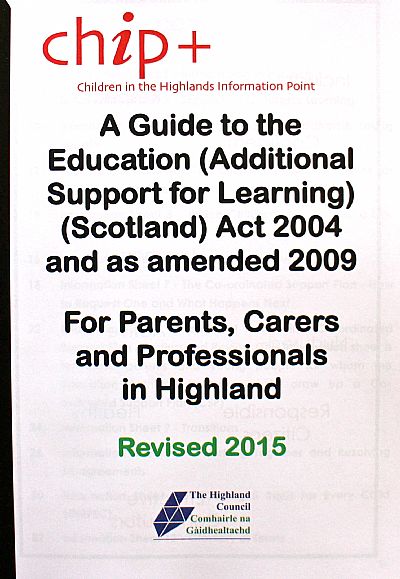Education
CHIP provides a first-stop information shop for the families and carers of children and young people with additional support needs. Additional Support Needs covers anything that leads to a child or young person needing additional support in school, for either a shorter period or longer-term. This might be a specific disability, but can also cover a range of other issues such as emotional distress, family circumstances, or external pressures.
If you have any questions that are not answered here, please contact us for help.
The Education (Additional Support for Learning) (Scotland) Act 2004 and as amended 2009
The 2004 Act introduced a new framework for supporting children and young people in education and introduced the term Additional Support Needs. The 2004 Act and the amendments resulting from the 2009 Act have extended the rights of parents and young people with regard to additional support needs.
The term Additional Support Needs applies to children or young people who, for whatever reason, require additional support, long or short term, in order to make the most of their education.
A range of information leaflets explaining the legislation is available and can be downloaded from our site.
Please note that the Information Sheets are available in the following formats:
- ASL Booklet (Full Booklet 918)k
- Dispute Resolution leaflet
- Information sheet 1 - Introduction
- Information sheet 2 - Supporting Childrens Learning
- Information sheet 3 - Rights for Parents
- Information sheet 4 - Duties and Responsibilities
- Information sheet 5 - Criteria for CSP
- Information sheet 6 - Co-ordinated Support Plan
- Information sheet 7 - How to Request CSP
- Information sheet 8 - CSP Meeting Review
- Information sheet 9 - Transitions
- Information sheet 10 - Resolving Disagreements
- Information sheet 11 - GIRFEC
- Information sheet 12 - Glossary
- Solution Focused Meeting
SQA Guidance
If you are disabled or need additional support, SQA can make an assessment arrangement for you when you take
your exams and assessments. Please see some of the guides explaining the arrangements below:
Assessment Arrangements Explained
